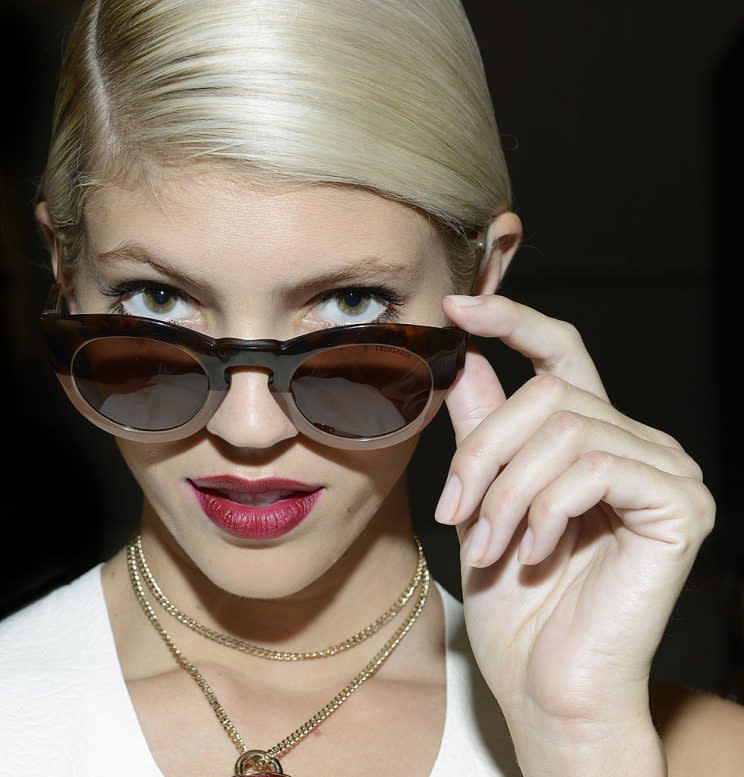Who Runs the World? Blondes, Study Says

Blondes may have more fun, as the saying goes, but that’s not the only upper hand they enjoy. New research conducted by two business-school professors shows that blond women also tend to have more power in the U.S. In fact, a disproportionately large amount of women hold positions of power compared with the number of blond women in the actual population.
Just take a look at the famous examples presented by Jennifer Berdahl, who co-authored the presentation with Natalya Alonso, both of the Sauder School of Business at the University of British Columbia: Hillary Clinton and Carly Fiorina, the first two women to be seriously considered as presidential candidates. Geraldine Ferraro, the first female vice presidential candidate. Sandra Day O’Connor, the first woman to serve as a U.S. Supreme Court justice. All blondes — and those are just a few.
Or look directly at Berdahl and Alonso’s research, which points out that 48 percent of female chief executives at S&P 500 companies and 35 percent of female senators are blond. And as Berdahl points out on her blog, the majority of female speakers at a recent Harvard Business School conference she attended also had light locks. So much for the “dumb blonde” stereotype, right? Well, not exactly.
A Really Important Melanoma Breakthrough Just Rocked the Science World
According to Berdahl’s essay, the passiveness associated with blond women could be the key to their success. “Preliminary results from our first study suggest that, similar to ‘The Teddy Bear Effect‘ for black men, in which babyface features render black men less threatening and more warm, innocent and trustworthy, blonde hair may be disarming for women,” Berdahl writes. “Our data suggest that blonde women are not only assumed to be younger than their darker haired counterparts, but are also judged to be less independent minded and less willing take a stand than other women and than men.”

Berdahl also calls this phenomenon the “Glinda-the-good-witch” effect. “Blonde women might be assumed to be kinder and gentler than others,” she writes. This, she suggests, makes blond women more palatable and seem less threatening in positions of power. The perception may have even rubbed off on toymakers at Mattel. Berdahl points to the new Female Interim CEO Barbie, a sharply dressed, put-together professional of a doll who also happens to have corn-silk tresses.
Empowering: Mattel Just Released An Interim CEO Barbie! https://t.co/Vc7QbFXbLc via @clickhole
— philko (@pkollar) March 6, 2016
But it’s not just warmth, innocence, and trustworthiness that’s associated with blondes — and favored in the boardroom and beyond. Berdahl also points to racial bias as a factor. Naturally blond hair is a Caucasian trait, she notes on her blog. It’s also a symbol of youth, she writes — the younger a person is, the more likely she is to be towheaded. Finally — of course it would come down to this — blond women are simply viewed as sexier in American culture, according to Berdahl. And research shows that attractive people — both female and male — tend to be more successful.
That said, the blond statistic doesn’t correlate to men in powerful positions. According to a 2005 study cited by the Huffington Post, a negligible 2.2 percent of male CEOs in the U.S. had blond hair. Considering that “two percent of humans worldwide have blond hair; and 5 percent of whites in the U.S.,” according to the site, that makes sense. But when you translate these stats to the blond-women-in-power phenomenon, they simply don’t add up. What about women who dye their hair blond, you ask? “If women are choosing to dye their hair blonde, there’s something strategic about the choice,” Berdahl told the Huffington Post.

Khloé Kardashian’s Secret to Strong Nails Is Actually Made for Horses
She suggested that becoming blond, whether conscious or not, might be a way of tempering masculine behaviors like assertiveness — they’re deemed more acceptable coming from someone disarming and childlike, she explains. “The same woman changes her hair color from blonde to brunette, and she’s seen as a bitch,” Berdahl told the Huffington Post.
“Maybe it is all of the above, and women who meet the feminine ideal in North American culture of being white, attractive, young and accommodating are more likely to attain leadership than less ‘ideal’ women,” Berdahl concludes in her essay, “even if these ideals have little to do with (or are seen as inversely related to) competence.”
Let’s keep in touch! Follow Yahoo Beauty on Facebook, Twitter, Instagram, and Pinterest.

